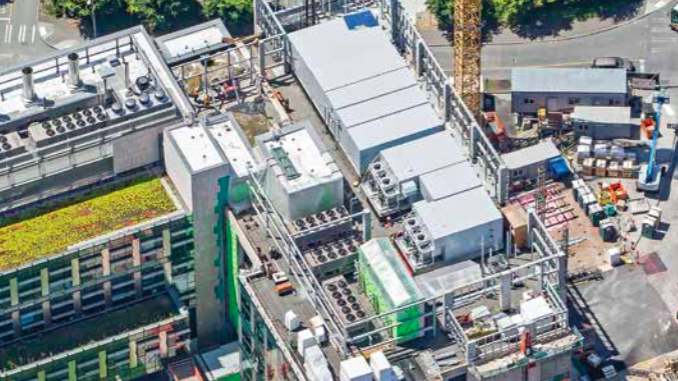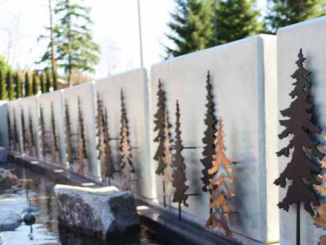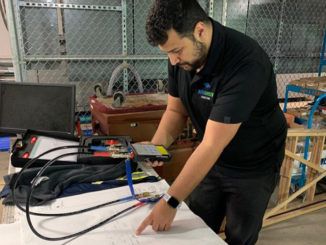By / Jessica Kirby
Project: NanoEngineering & Sciences Building, University of Washington, Seattle, WA
Architect: ZGF Architects LLP
Holaday-Parks: Mechanical Engineer
Ho man Construction Company: General Contractor
Valley Electric: Electrical Contractor
Total Building Area: 78,000 square feet
Total Construction Cost: $53,000,000
Designed by ZGF Architects and constructed by Hoffman Construction, the NanoEngineering and Sciences Building at the University of Washington in Seattle is phase two of a 168,000-square-foot complex equipped for the performance of organic, inorganic, and biomolecular synthesis. The building is designed for low vibrations and electromegnetic interference, and features 43,000 square feet of research space and 8,300 square feet of learning space.
The building achieved high energy efficiency and LEED Gold certified research lab status—a challenging task given safety and programmatic requirements. It features a naturally ventilated laboratory to reduce air changes by 40 percent, water-cooled chilled beams, and chilled sails provide temperature control.
The build comprised a new building being erected adjacent to and joined with an existing building – the Molecular Engineering
and Sciences Building – which required a well-coordinated construction schedule and, for Holaday-Parks, mechanical engineers on the project, it meant intertwined mechanical systems on a small footprint.
“There was process water, natural gas, compressed air, and steam circulating and plumbing between the buildings,” says Anita Dias, project manager for the NanoES building. “We also started with the idea of doing the shell and core without any tenant improvements.”
Things didn’t quite work out as planned. When Dias’ team started the detailing process, the design wasn’t yet finished. “We decided at the end of the job that waiting three months would have significantly reduced some of the design challenges, but as it happened we were in the ground early under a tight schedule.”
The six-level project included a basement where the mechanical room is located, four occupied floors, and a roof. The crew finished the ground level and had just moved up to second when it had to go back down for the tenant improvements in the labs. “I don’t think we ever had a total set of drawings,” says Dias.
The build took just over a year, wrapping up in 2017.
A key challenge for the technicians was the size of the mechanical room—at 20 x 50 the immense amount of equipment was a tight squeeze. “Everything had to be dropped down a shaft because the building had closed up before we were able to get it in there,” says Dias.
Another was completing the plumbing system on the new build, but not the existing structure. It was discovered late in the process that the plumbing system installed in the old building didn’t have the pressure to get to the very last lab on the top floor.
“It just wasn’t designed to do that,” says Dias. “We found out late, but our plumbing and HVAC foremen on site were some of the best we have, so they could handle the challenge.”
The company also installed some radiant hangers for the first time, and some of the more familiar systems were replaced by newer technologies chosen for their aesthetic appeal.
Some of the classrooms featured significant glazing, but no plan for coverings—this was cause for concern for heating and cooling. “We added extra legs to radiant heaters to make sure they worked,” says Dias. “The fans were also upsized, the noise level of which was still under discussion on the final walkthrough.
“We finished and met all the challenges that arose along the way,” says Dias. “It was a great learning experience for everyone and a success for the university. The foremen and the entire Holaday-Parks team are proud of this project.”




